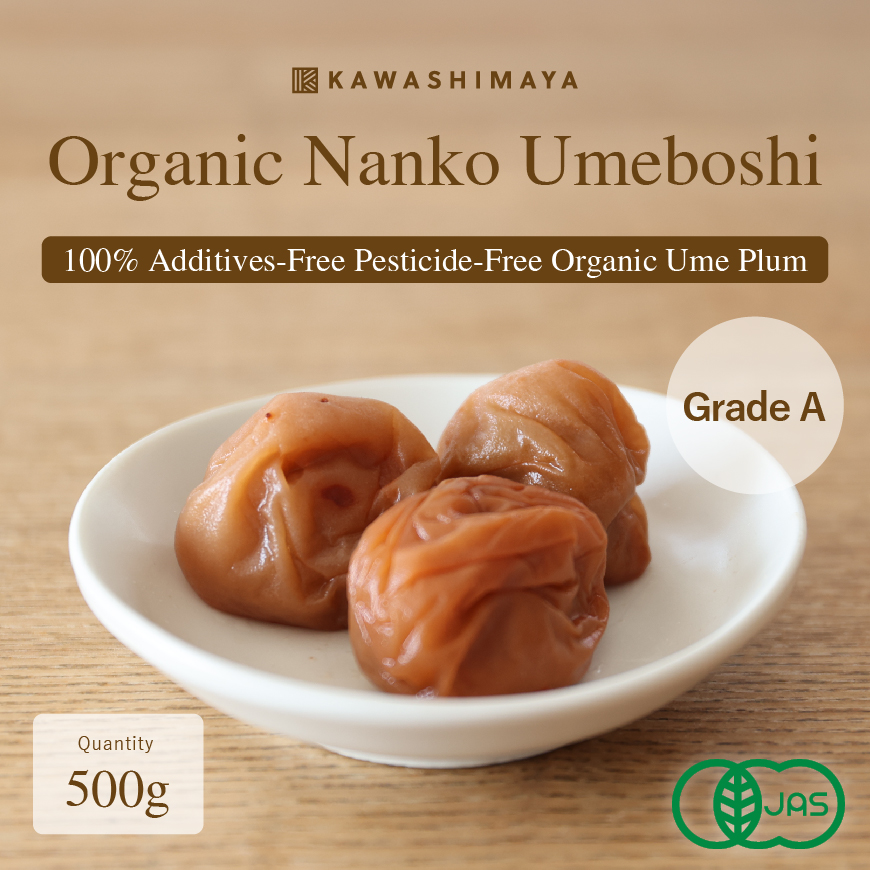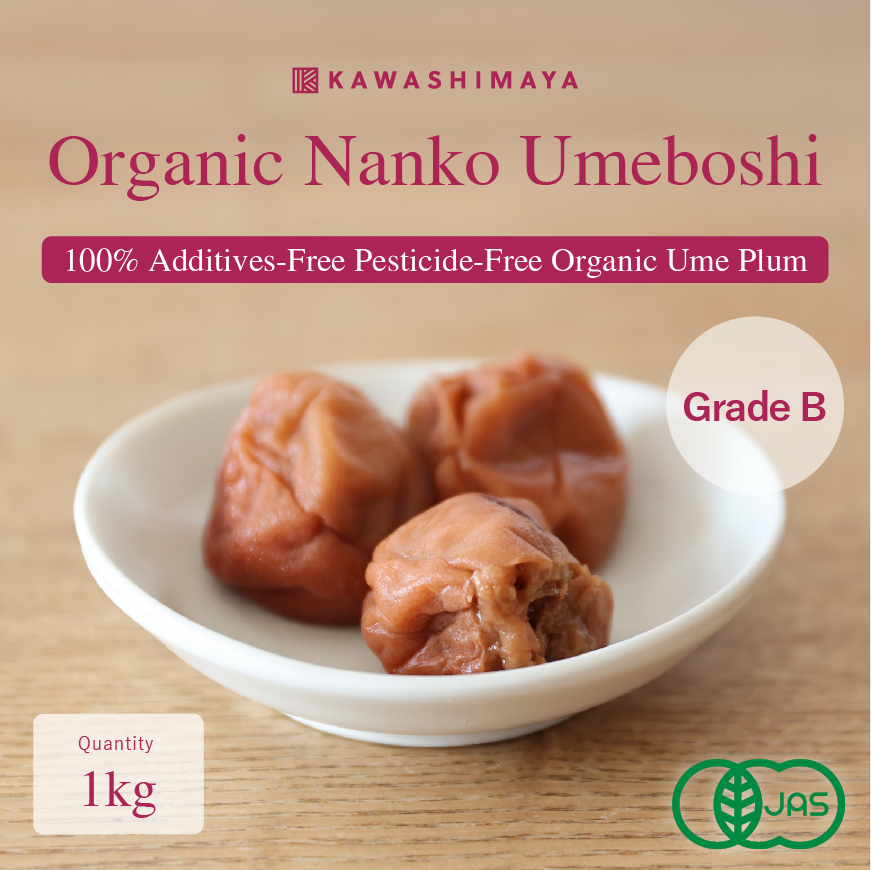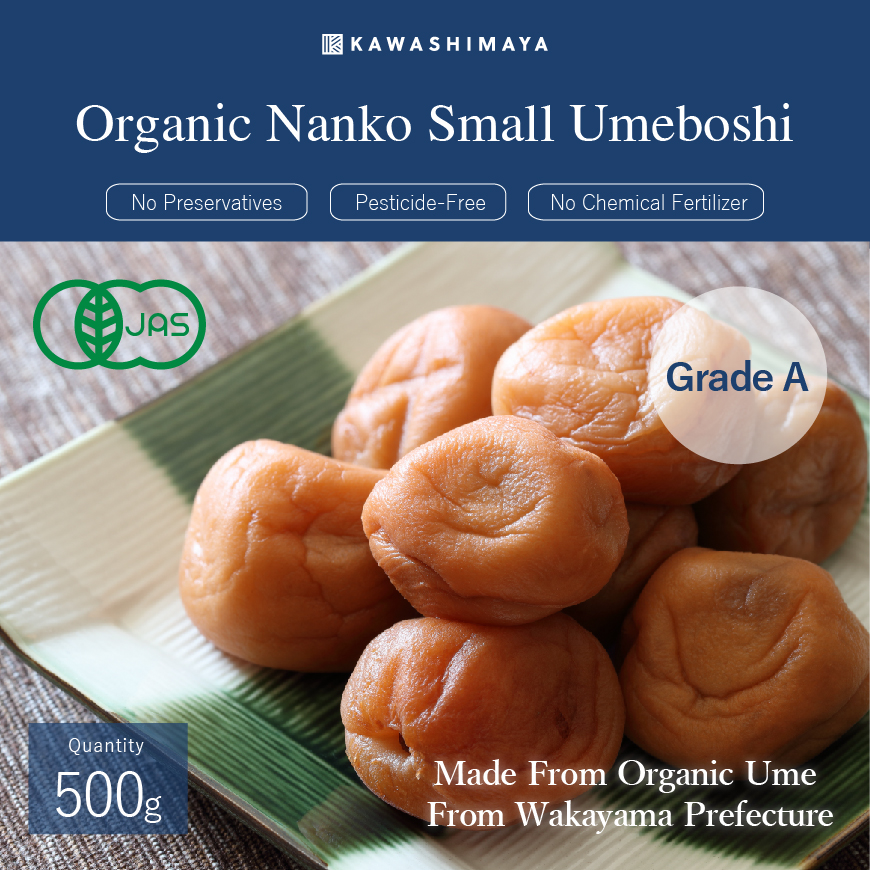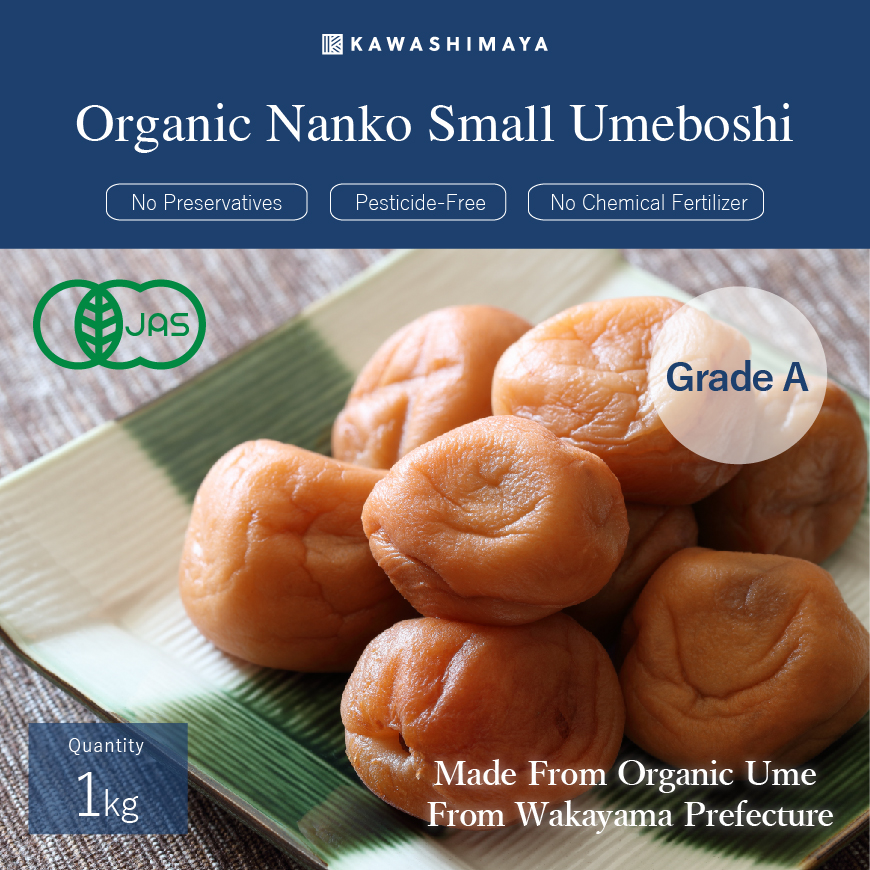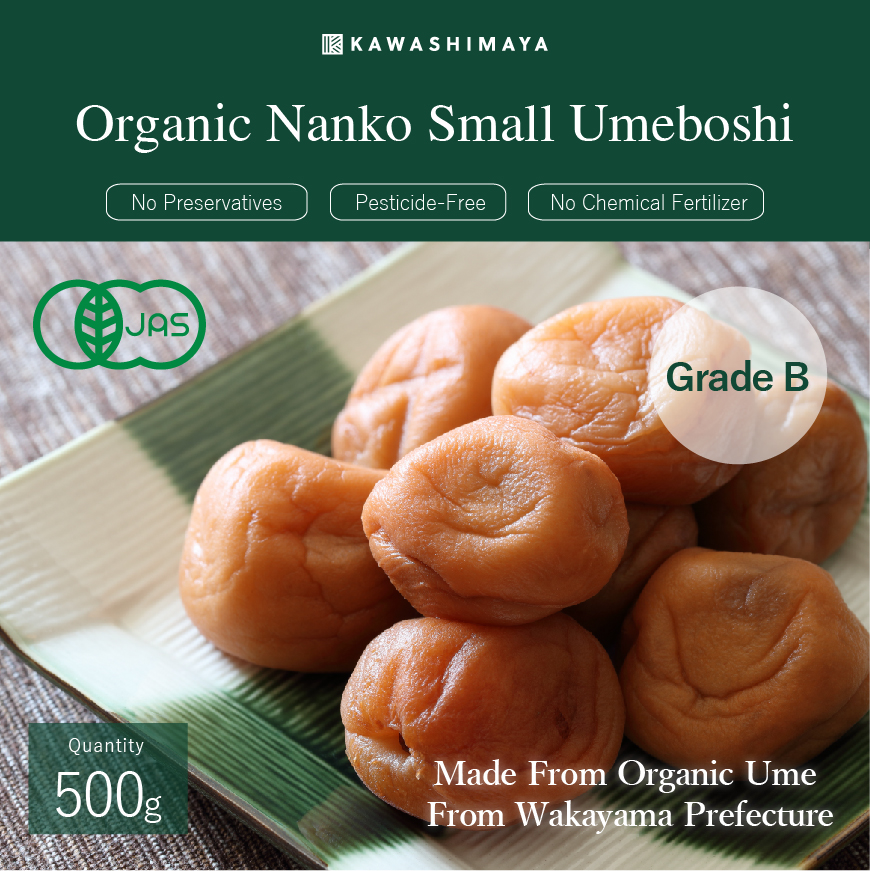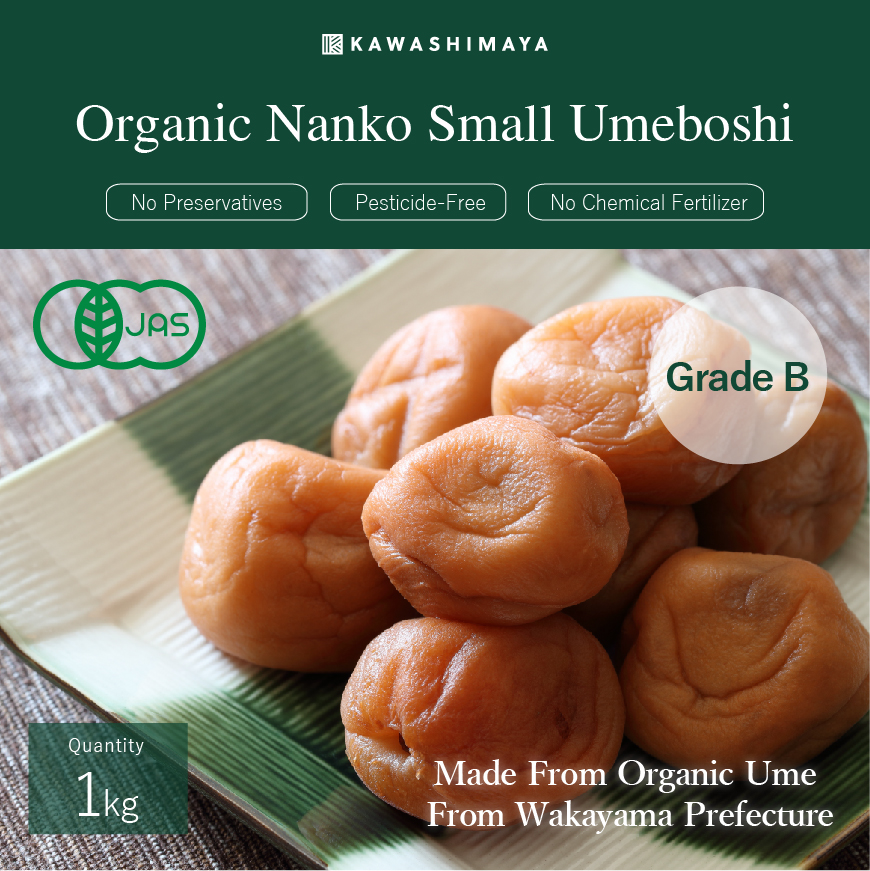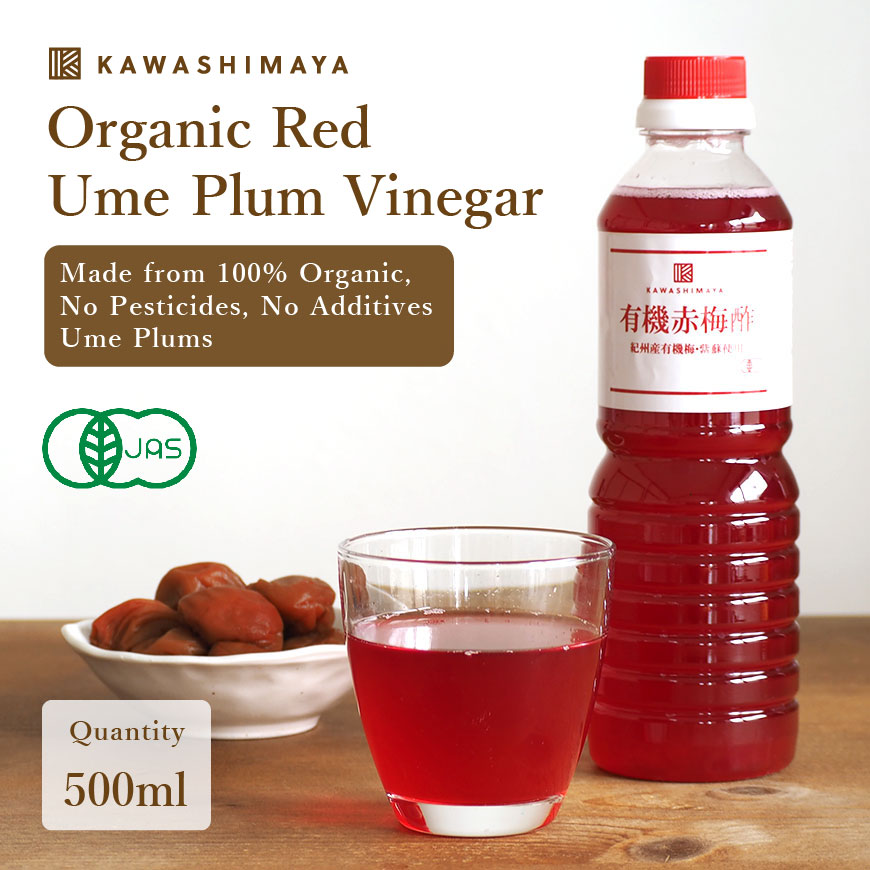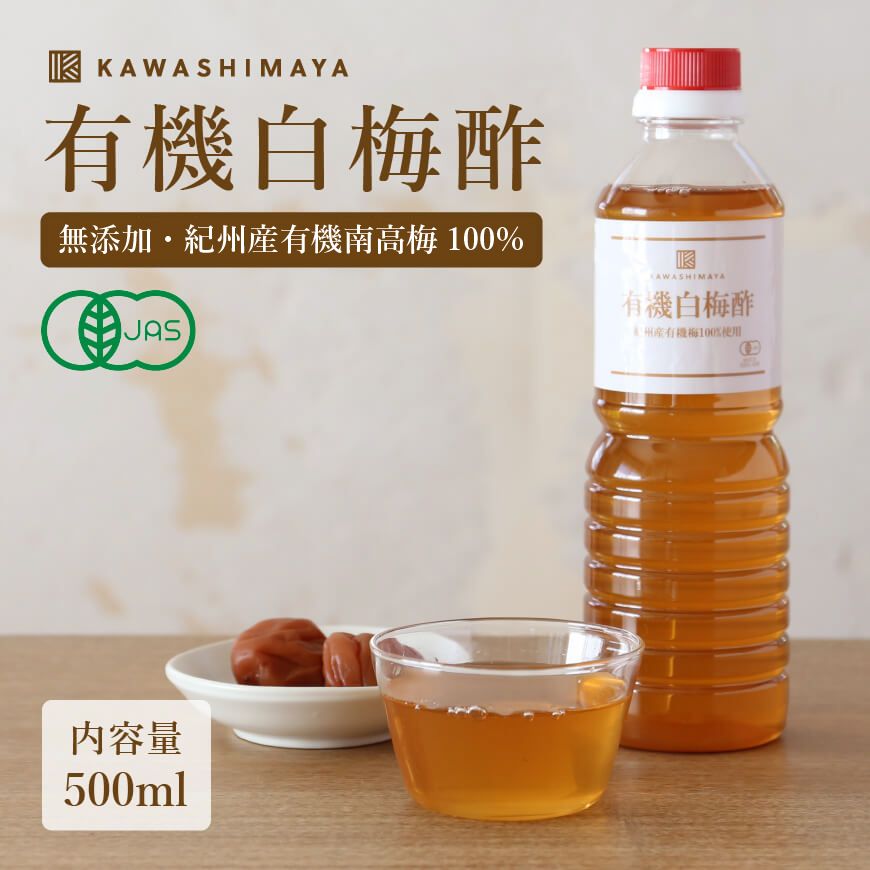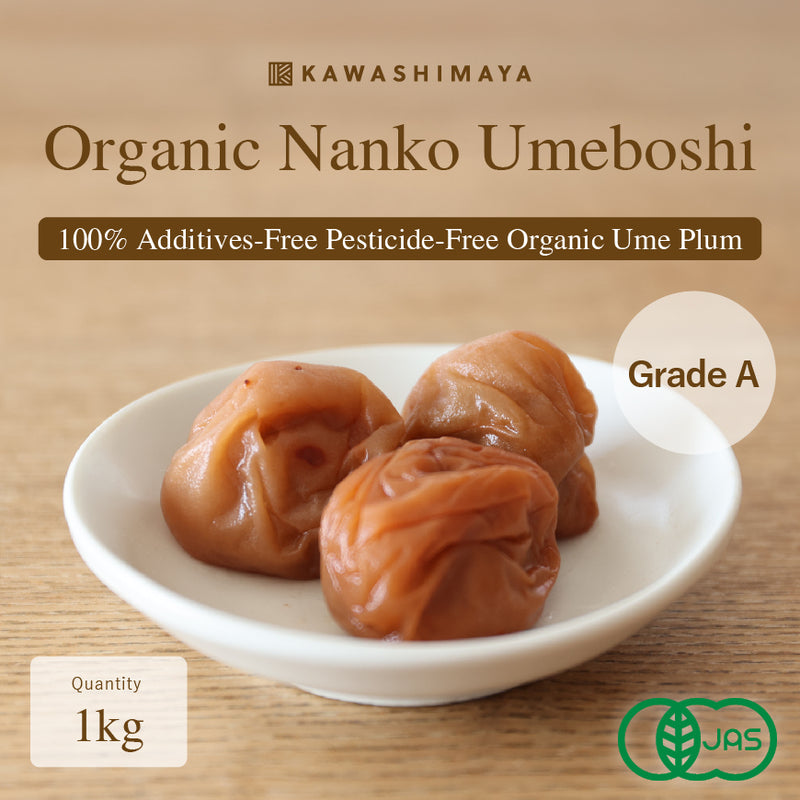
Organic Nanko Umeboshi Grade A 1kg - Grown In Wakayama Prefecture With No Additives, No Pesticides, And No Chemical Fertilizers
Out Of Stock
100% Organic Ume Plum, Cultivated Without Pesticide And No Chemical Fertilizer
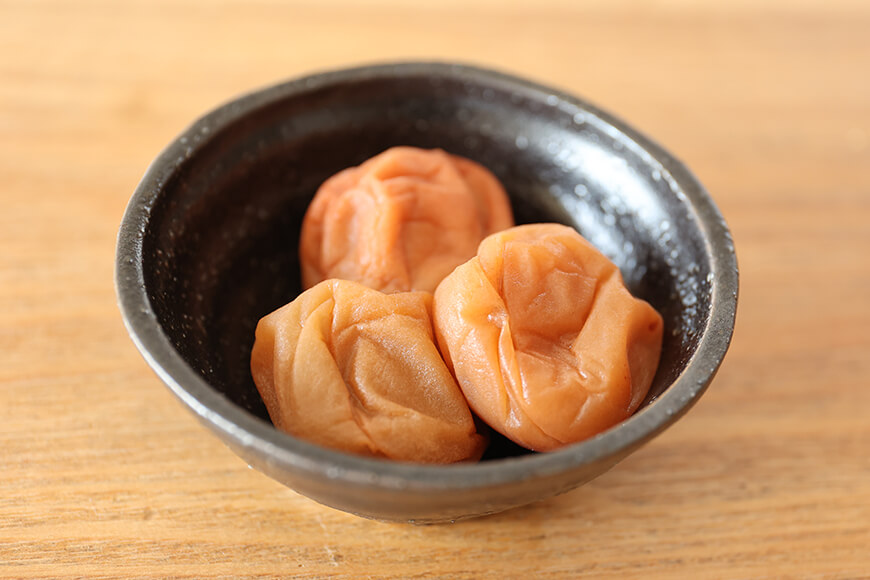
The plum used for this umeboshi is a ripe plum cultivated with no pesticides and no chemical fertilizers. Each plum is carefully selected by hand, soaked in only natural salt rich in mineral, and dried well in the sun. After that, the plums are soaked in barrels and carefully aged until it becomes a delicious umeboshi.
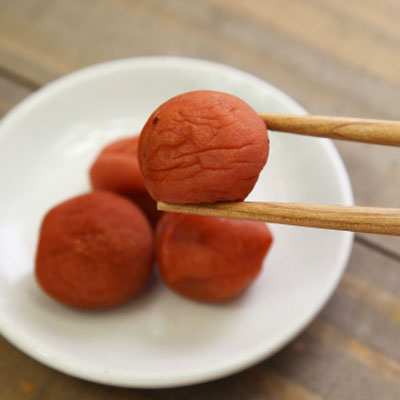
Safe Pickled Plums That Have Acquired The Organic JAS Certification
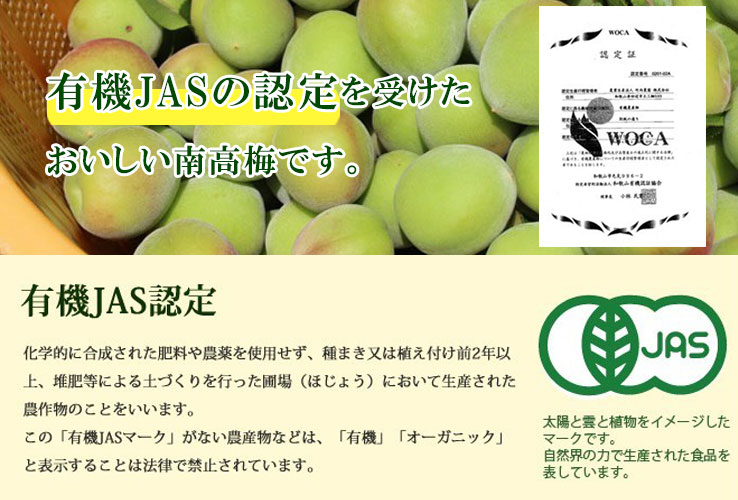
This umeboshi has received the organic JAS certification, which is rare even among other authentic Kishu products.
Plums are susceptible to diseases and are easily eaten by insects, so it is common to use pesticides. However, we do not use any pesticides or chemical fertilizers in order to protect the traditional Japanese food and for our customer to enjoy them more safely and with peace of mind.
Additive-Free, Old-Fashioned Sour Umeboshi
To make this umeboshi, plums grown with pesticide-free and chemical-free fertilizers are soaked in natural salt and dried in the sun. It is a traditional sour umeboshi with delicious mellowness in the sour and salty flavor profile. This umeboshi has been carefully aged. Please enjoy the real taste of natural umeboshi.
*No sweeteners or chemical seasonings are used.
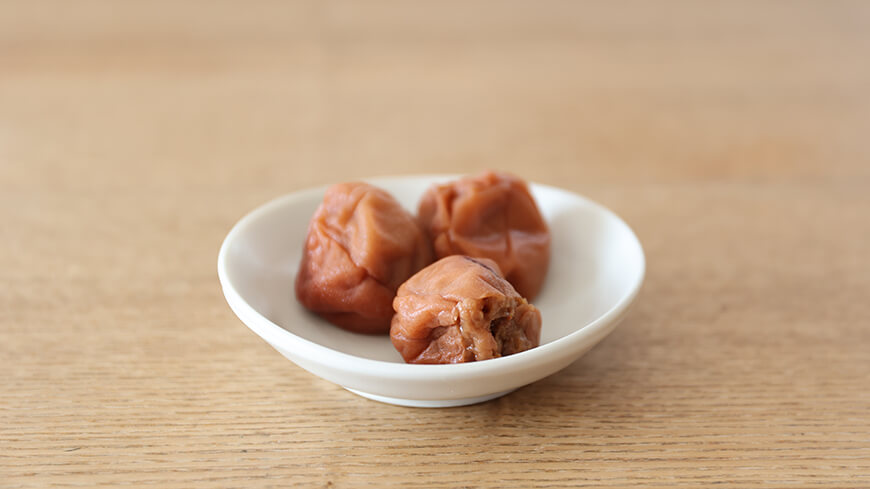
The salt content of this umeboshi is 18%. The salt concentration is suitable as a natural preservant for long term storage.
Thick Umeboshi With A Nice Bite Sensation
One umeboshi is eaten as one portion. Other than eating it together with rice, you can enjoy it by dissolving it in tea. Our organic umeboshi is just the right size to eat in one bite. It is also useful for lunch boxes and rice balls.
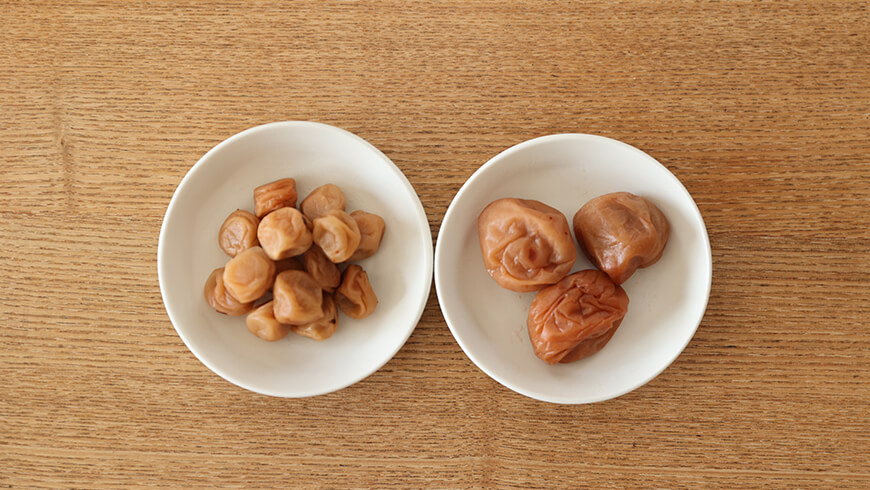
(Left: small-sized umeboshi, Right: organic umeboshi)
Kawashimaya Umeboshi Product Lineup
Organic Nanko Umeboshi
Organic Nanko Small Umeboshi
The Home Of Kishu Nanko Plums, The Famous Plums From Wakayama Prefecture
Ume plum, which is the raw material for umeboshi, is a plum that has been carefully cultivated through organic cultivation that has been established over many years in the natural environment of Tanabe City, Wakayama Prefecture, the home of Kishu Nanko Ume.
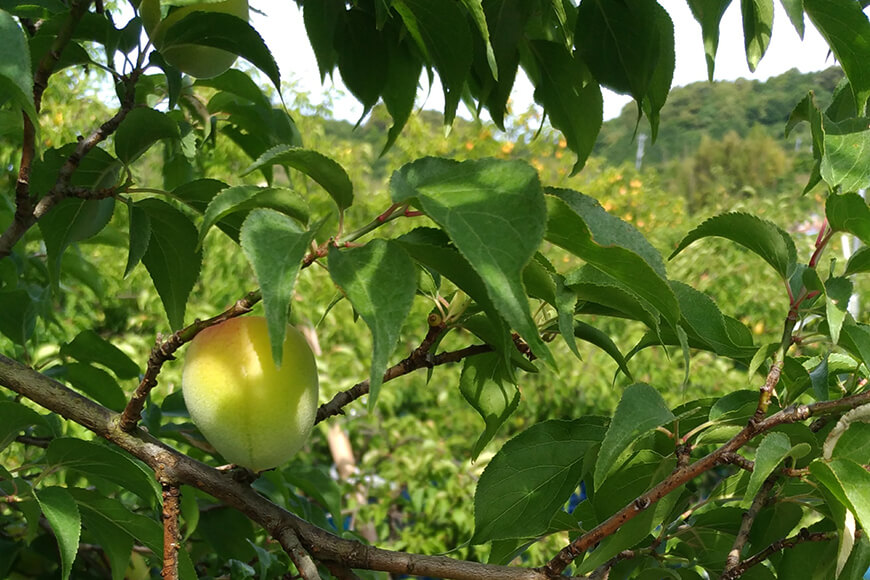
Tanabe City, Wakayama Prefecture, is blessed with a warm climate with little change in temperature throughout the year due to the influence of the Kuroshio Current flowing into the Kii Channel. The heavy rainfall and long daylight hours also help in making an environment suitable for the characteristics of plum blossoms.

In addition, "Uridani ishi", which is often found in this area, is made of calcium carbonate and is a medium-quality soil that contains a large amount of calcium required for plum trees. The producer, Takeuchi Farm, is particular about the best soil and organic cultivation for this ume production, and continues to grow high-quality ume until now.
Commitment To Plum Organic Farming
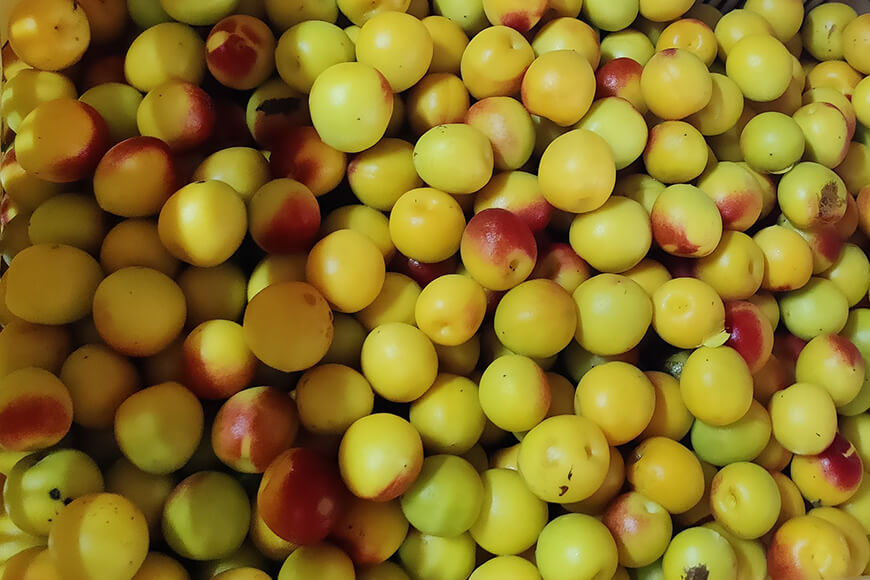
Plum itself is a fruit that can be eaten as a whole, so with the motto of safety and security, our plum farmers are working on pesticide-free and chemical-free fertilizers. As a method of preventing plum insects and diseases, they use wood vinegar, which can be taken from nature as a natural pest repellent and do not use pesticides. Instead of chemical fertilizer, our farmers use a natural foliar spray made from garlic, fish, and oysters.
How To Deliciously Enjoy Nanko Umeboshi
Enjoy Together With Warm Rice
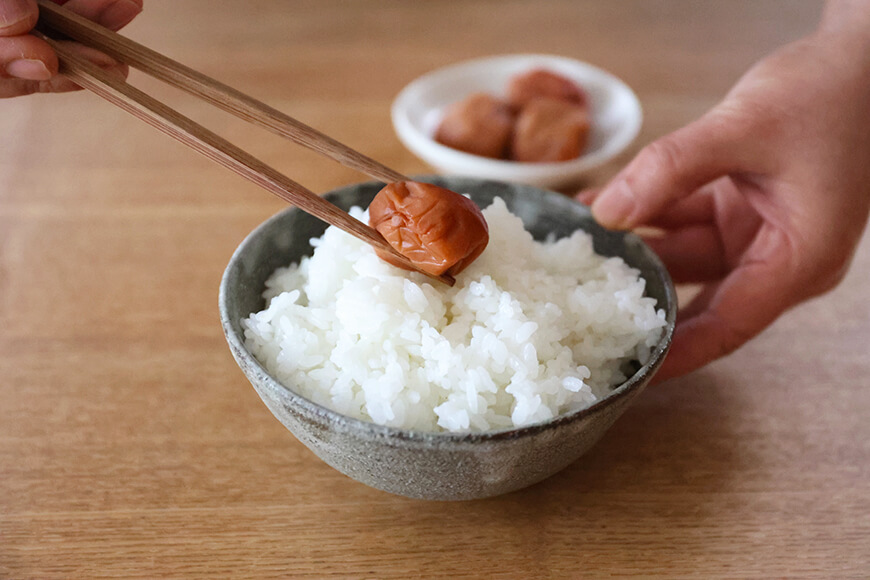
Of course, you can also use it as a rice ball topping, put it over rice porridge, or enjoy with cooked rice.
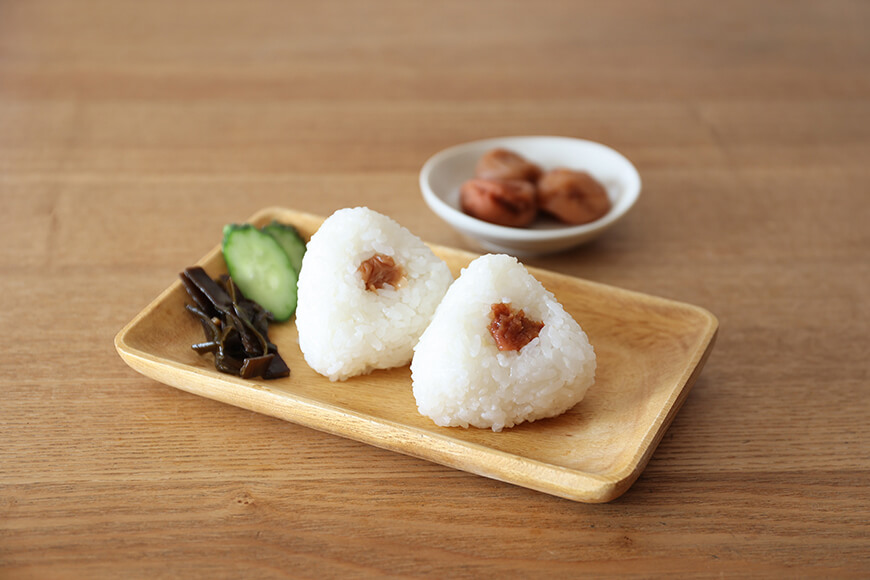
Dressed Vegetables With Umeboshi
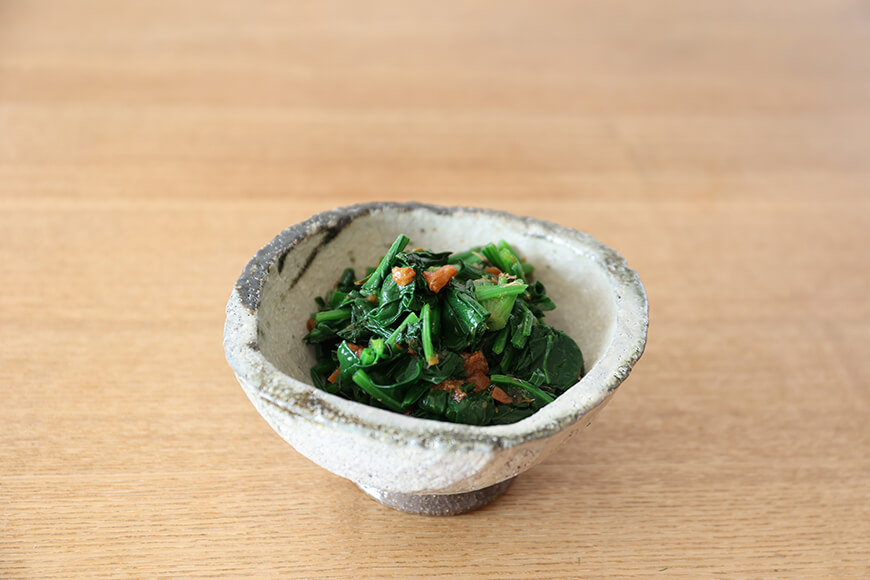
By using the salty taste of pickled plums, you can use it as a seasoning for cooking.
Dressed Vegetables With Umeboshi
Ingredients (1 Serving)
- 1 Handful of Spinach
- 1 Umeboshi
- 1 Tsp Soy Sauce
- Bonito Flakes (As needed)
How to Make
- Boil water, when it starts to bubble, add the spinach. Let boil for a few seconds until soft then take it out.
- Cut the spinach into bite sized pieces.
- Take out the umeboshi seed, and slice it.
- Mix the cut up umeboshi with soy sauce.
- Dress the spinach with umeboshi soy sauce mix and sprinkle bonito flakes to finish.
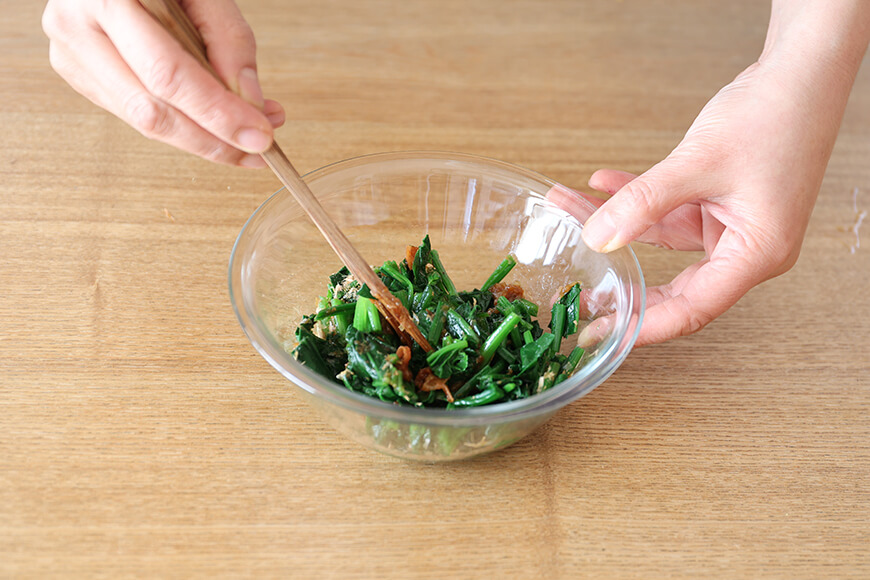
Use As An Accent To Fish Dishes
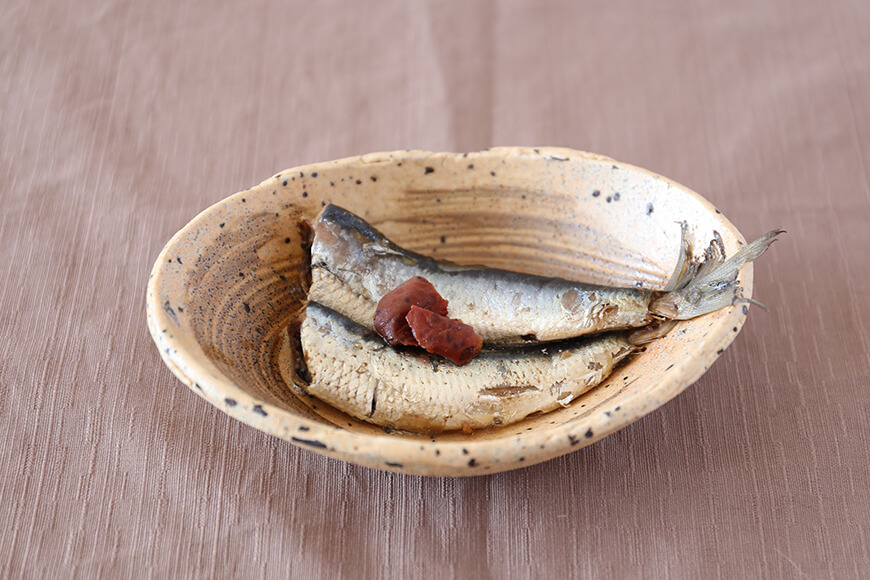
Adding a small amount of dried plums will improve the aroma of fish. The sour taste of dried plums makes it possible to enjoy fish with a refreshing aftertaste.
Add To Radish Soup
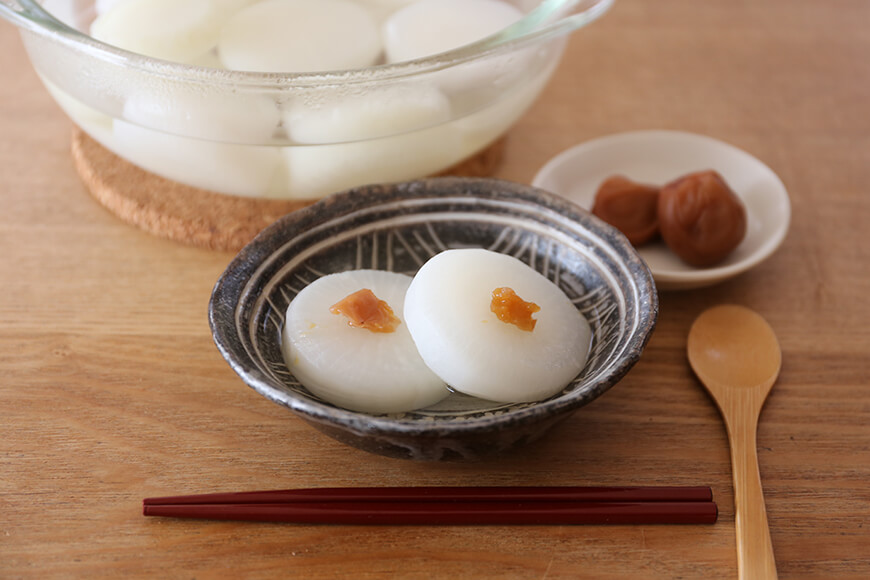
Radish umeboshi soup has long been known to help the gastrointestinal function. It's delicious as a side dish, but it's also recommended when you want to get rid of your stomach problems.
Enjoy Together With Bancha Tea
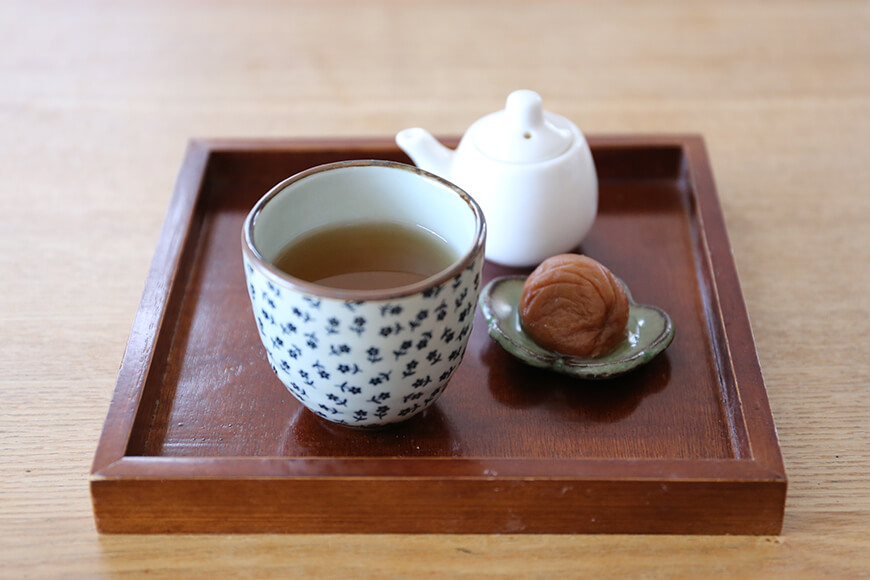
You can enjoy it deliciously just by putting it in bancha tea as it is. We will introduce how to make "Umesho Bancha Tea" with simple steps. Additive-free organic umeboshi will make an already healthy drink healthier.
How to Make Umesho Bancha (Tea With Umeboshi)
Ingredients
- 1 Umeboshi
- 0.5~1.5ml Organic Soy Sauce
- 1/4 Tsp Grated Ginger
- Bancha Tea
How to Make
- Tear the umeboshi into small pieces and put it into a cup.
- Add some drops of soy sauce.
- Add the grated ginger.
- Lastly, pour the bancha tea.
We recommend Umesho Bancha for these occasions
- When you have stomachache
- To relieve fatigue
- When you feel like you're about to catch a cold
- To relieve hangover
- To improve health by drinking it regularly every morning
- When you need an energy boost
- To break your fast when you're fasting
Supporting Daily Health With Organic Umeboshi
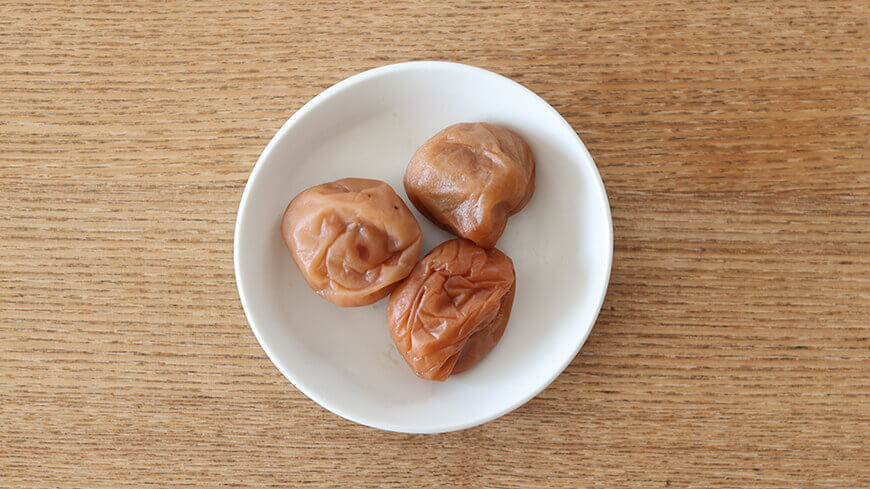
Citric acid, the healthy component of plum
Umeboshi is rich in citric acid produced by natural fermentation. Citric acid has the function of promoting and activating the metabolism of carbohydrates inside the body, assisting energy metabolism, and supporting the recovery of fatigue of the body. Once inside the body, it activates the function of bile and can be expected to have a preventive effect against bacteria that cause food poisoning.
QnA About Umeboshi
What is the main ingredient for this Umeboshi?
This umeboshi uses organic umeboshi cultivated without any chemical pesticides nor chemical fertilizer and natural salt
Can umeboshi dry up?
Depending on the storage, umeboshi can dry up. If you want to keep the moisture longer, you can keep umeboshi soaked in ume vinegar. Feel fre to keep umeboshi the way you like it.
How much salt contained in this umeboshi?
Our umeboshi contains about 18% of salt. Just like the traditional umeboshi
Do you have any tips on how to eat Umeboshi for people who aren't good with saltiness?
You can soak umeboshi in water to remove the saltiness, or soak it in honey to add sweetness. In addition, it is also recommended to use it for seasoning dishes, such as adding it to seasonings and soups by taking advantage of its saltiness.
Is it okay to eat the black spots on the surface of the pickled plums?
Since plums are grown with no pesticides or chemical fertilizers, spots or stains may be seen on the surface of the plums. It is an organic plum. You can enjoy it with confidence.
What is Grade B umeboshi?
Grade B umeboshi is umeboshi that have been slightly crushed or deformed during the pickling process. The texture can be softer than that of uncrushed umeboshi. However, there is no difference in salt content or taste quality.
Kawashimaya Umeboshi Product Lineup
Organic Nanko Umeboshi
Organic Nanko Small Umeboshi
Buy Umeboshi Together With Our Ume Vinegar
Ume vinegar can be used to soak umeboshi to help keep it fresh. Please try it together.
Product Details
| Product Details | |
|---|---|
| Raw Ingredients | Organic Nanko Plum (Made In Tanabe, Wakayama)・Salt |
| Quantity | 1kg |
| Storage Guide | Keep in refrigerator after opening |
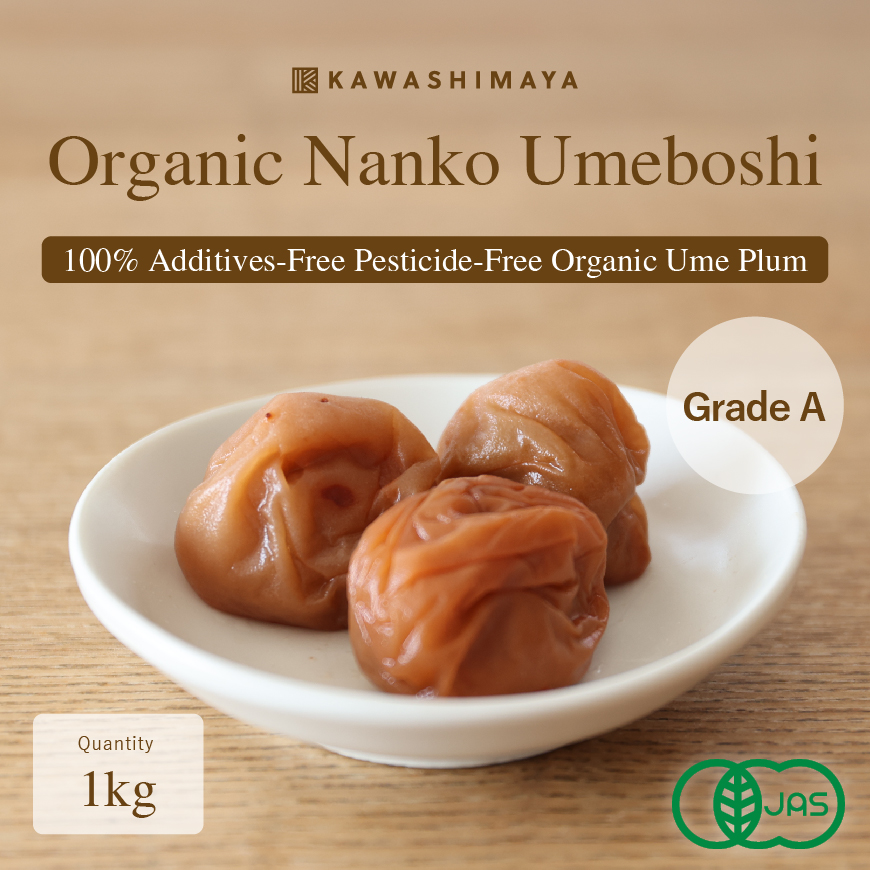
Why shop with KAWASHIMAYA?
- We sell only authentic and high-quality products
- 100% Made in Japan products are as listed
- Organic and non-GMO products are as listed
- All products are new and have long expiry date
- All products are handled directly from our warehouse in Tokyo, Japan
- Easy and secure payment options with CC or PayPal
- Safe and insured international shipping methods
- English and Japanese customer support by email
- Wholesale discount prices available for selected products
- Find insightful articles from KAWASHIMAYA Blog
- Get exclusive discounts for KAWASHIMAYA Newsletter subscribers
- Easy shop on KAWASHIMAYA Amazon USA

